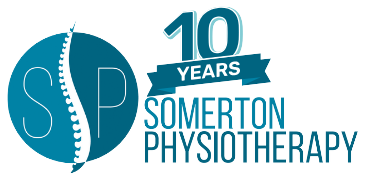Running Injury
Have you taken up running Recently ?
In this article I will discuss some injury risk factors and hopefully outline the most important ones in terms of preventing running injuries. I have also included a video below with recommended exercises.
Running injuries are classified into intrinsic and extrinsic factors. Risk factors often mentioned are foot-type, lower limb strength, flexibility and running mechanics. Other factors include those related to training such as how quickly you increase your running mileage.
What causes Running injury?
“Training error” has been estimated to cause 60-80% of all running injuries. This would mean running more than the runner can tolerate in terms of mileage or intensity and not giving enough time to allow the body recover. Each runner will be able to handle a different amount of running depending on a number of factors including their training age (how long they have been running for), their overall health and pre-existing injuries. Two good examples of this are body mass index or BMI and previous injury which have both been shown by studies to increase injury risk in runners.
The majority of runners we treat in our clinics report a recent (and often sudden) increase in their running volume (number of miles) or running intensity. This often precedes that runner complaining of common issues such as shin pain and Achilles tendon pain. An important first step in treating these runners is to reduce the amount of running they are doing to a level where they have little or no pain. It is often hard to convince a dedicated runner to do so, but luckily it can help reduce painful symptoms very quickly.
Greg Lehman recommends a running plan that allows increases in mileage that you can handle. This can mean a 5-10% increase of weekly volume that is mixed with plateau or rest weeks. The important thing is to increase your pace and volume slowly as the “too much too soon” adage applies!
Running coach Hal Higdon describes runners as having a “breaking point” which they should train below and novice runners should be particularly careful when advancing their running programmes.
There are numerous books, websites and apps which outline running plans. The Nike Run app is a popular example. However, the main advice I would give people in clinic interested in taking up, or getting better, at running is to listen to their bodies and be flexible in their approach as often things need to be tailored to their specific situation. There is no ‘one size fits all’ when it comes to developing a training plan.
Strenght and conditioning:
While a high B.M.I or having a previous injury can reduce how much running you can handle, strength and conditioning (S&C) can increase it. There is growing evidence that S&C can prevent injury and improve performance. A study by Lauersen et. al. (2013) investigating the effectiveness of stretching, strength training, proprioceptive or balance exercises and combined approaches in preventing sports injuries concluded that “strength training reduced injuries to less than 1/3 and overuse injuries could be almost halved”. This study looked at different athletes and not runners, but I think the findings can be applied to runners too.
Increasing the load capacity of the body’s tissues is important in terms of injury prevention.
How do I strength train?
A good warm-up might consist of mobility (foam rolling, dynamic stretching), muscle activation work to “switch on” running muscles and movement preparation followed by functional exercises doing 4-8 repetitions for 3-4 sets. Rest intervals e.g. 1-2 minutes should be given between each set. The main muscle groups targeted include the quads, hamstrings, calves and glutes but this will vary depending on your strengths and weaknesses.
I usually recommend runners do this type of session 2-3 times per week giving themselves enough time to recover between strength work and running.

Stretching has long been popular with runners and the phrase “I don’t stretch enough” is often heard in the clinic. Recent research has shown static stretching to be unhelpful in terms of preventing injuries or improving performance. Given the lack of evidence for stretching in general, I usually advise runners to prioritise strengthening exercises and if they have the time or enjoy it, they can stretch too. Note: stretching increases the capacity of muscle to tolerate stretch not load.
Other Important Factors:
Lifestyle factors such as sleep, stress and nutrition are all relevant in terms of injury in running. It is widely accepted that such non-running factors have an impact on a person’s injury risk. It is also worth mentioning that pain is much more complex than just tissue damage and the factors listed above can impact on how much pain someone feels if they are injured.
Conclusion:
In summary, the main causes of running injury are training errors, previous injury and having a high BMI. You are therefore unlikely to see a benefit from more stretching or buying expensive shoes but taking a sensible approach to your training and implementing strength and conditioning into your programme can go a long way to prevent bothersome running injuries.
A Final note: some runners report finding a good benefit from passive therapies such as sports massage and trigger point dry needling. We often use these in conjunction with exercise as part of a rehabilitation plan when clients are seen in our clinic.
You can also check out our Running Performance Lab, located in our clinic in Castleknock GAA Clubhouse, where we provide a platform for recovering athletes to regain their full potential. We review your running technique from multiple angles in our state-of-the-art facility. We then analyse your run using world-leading movement-capturing software (Dartfish) in order to construct a plan tailored to your needs.
We treat runners of all backgrounds, whether you are a beginner, recreational runner or an elite athlete. If you are suffering from running-related pain or just want to improve your running times, our detailed assessment and treatment plans and packages will help you to take your training to the next level. Click here for further detail
To get in touch email us on [email protected] or phone us on (01) 9069566 . Follow us on Instagram for physiotherapy and clinic Updates.
